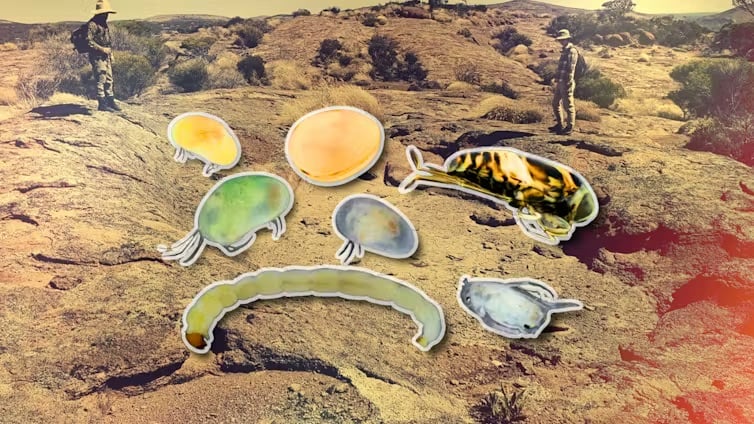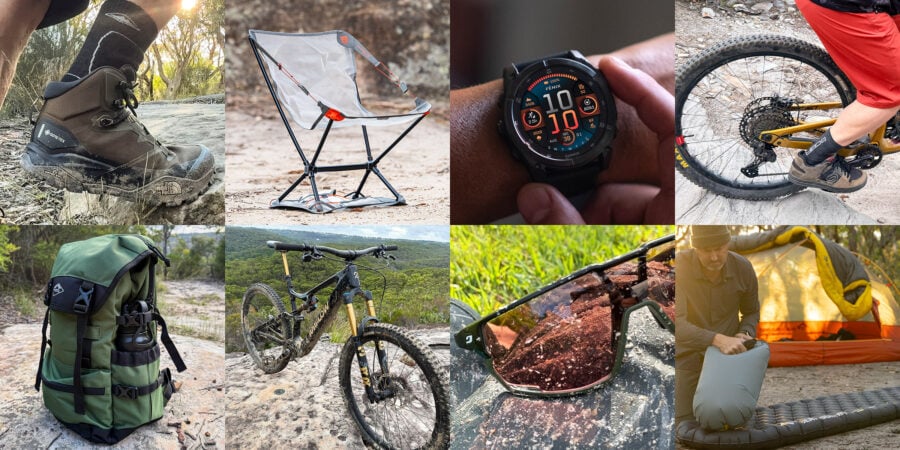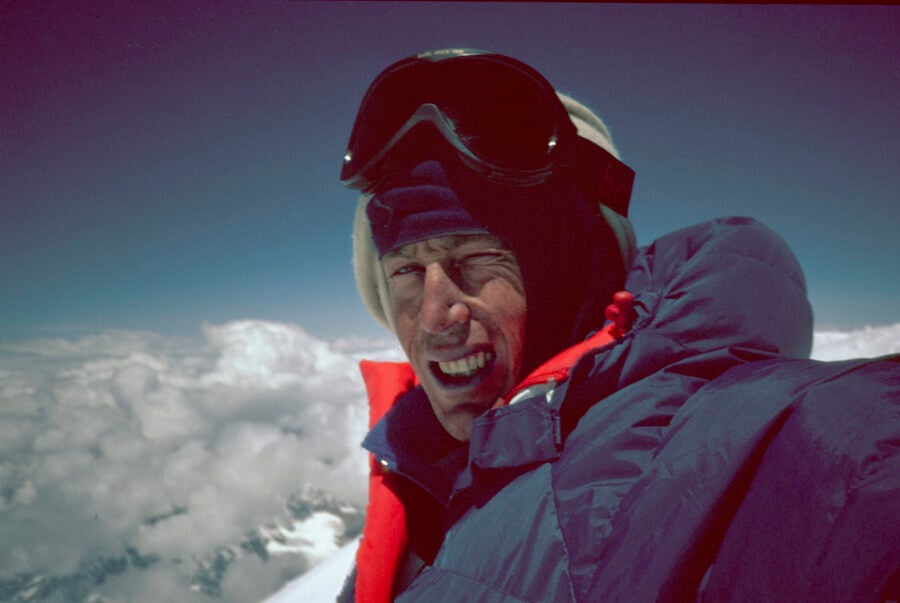Life through the eyes of a turtle
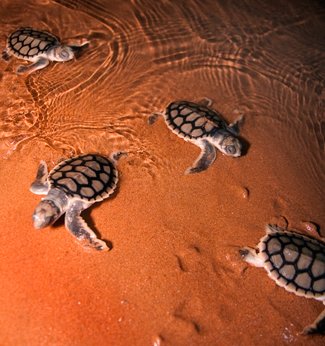
The author Dion Wedd is the curator of the Territory Wildlife Park in the NT. Last year, he was handed an orphaned flat-back turtle that had been caught in a ghost net and was prompted to write the following story about the creature’s plight.
LATE ON A COOL NIGHT in August 2010 a baby flat-back turtle emerged with her siblings from a sandy nest to face the first of many challenges in her race to adulthood. Fifty-four turtles hatched that night; only 20 made it past the hungry crabs, beach curlews and gulls waiting for a reliable, easy meal.
Focusing an orange glow on the horizon, the baby turtle split from the group and instinctively headed toward the brightest section of the beach. Unknown to her, this wasn’t the water she was hoping to find. An hour of trudging through the soft sand had passed and she still hadn’t reached the safety of the water away from the ravenous beaks and claws of the hungry predators on the beach.
To her, that faint orange glow seemed to be getting further away. Pausing briefly to orient herself, she noticed a glow on the eastern horizon and immediately changed her direction and headed toward the dim light. She reached the water just minutes later as, nearby, fisherman began to stir around a dying campfire in the early dawn light.
Entering the water, the turtle found herself being pulled into the ocean under the power of a retreating wave that carried her swiftly out into the deep. This environment felt foreign to her, yet a primitive force surged through her tiny body as she swam strongly, only to pause briefly on the surface to catch a breath every few minutes.
A strong high pressure system had moved across southern Australia only a week before. The strength of this system forced south-easterly trade winds across the coast of the Northern Territory, bringing with it rough weather. A bed of Sargassum seaweed, growing strongly on the reef no more than 100 meters off the beach since September the year before, was torn free of its holdfast and was now drifting in the open sea.
Swimming strongly now in the early morning light, the little turtle was lucky enough not to have encountered any more hungry mouths as she ventured further into the open ocean. Perhaps a receding tide was holding the larger predatory fish in the deeper water on the outer edges of the reef. She’d been in the sea now for about 20 minutes and hadn’t seen any of her siblings from the night before.
Pausing for a breath and swimming strongly again, she bumped into a large brown mass that was so immense she couldn’t see a way out. Although feeling surrounded by this large mass, she felt a sense of safety. She had found sanctity in the dislodged Sargassum mat that would provide her with all that she needed during the coming weeks, offering her the best chance of reaching adulthood.
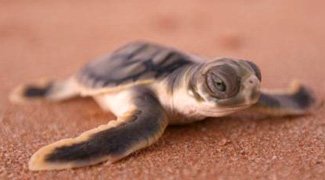
A flat-back turtle hatchling (Untamed Outback Images)
Flat-back turtle independence
Weeks had passed as she drifted along with the seaweed mat that provided her with an easy source of food, including tasty treats such as crabs, shrimps and prawns and baby squid. As the weeks turned into months the little hatchling had grown substantially and was now becoming independent of her seaweed clump. She would often venture away, through the open ocean, from reef to reef in search of soft corals, sponges, squid and cuttlefish to nourish her young developing body.
On a balmy evening in November as she came to the surface for a breath, her nose brushed an unfamiliar object floating on the surface. To her, this was like the seaweed she’d travelled with for many months before, but something was strange about this as she pushed her nose through to take a breath. She found that her right front flipper was tangled and she couldn’t pull it free. Normally old seaweed breaks away, but this didn’t. As she tried harder to free her right flipper, her left front flipper became tangled as well. She struggled for hours in this strange seaweed to no avail. Fortunately she was on top of the mass and was able to breathe freely and rest when she became too exhausted to continue struggling.
As the sun rose the next morning she continued the struggle against her strange bonds and as the morning eased into the afternoon she could feel the effects of the hot tropical sun sapping her energy and burning her skin. Her struggle to free herself went on day and night for over two weeks, each day more of a struggle than the last.
She hadn’t eaten for 16 days and was almost totally exhausted, her body gaunt from near starvation and her senses dull. In an exhausted haze she realised that she was being thrust upon a sandy beach, totally entangled in an old fishing net. Each successive wave pushed her and the net further up the beach on the incoming tide. Too tired to struggle now, she was entirely at the mercy of the sea as she lolled back and forth until the tide turned, leaving her stranded high on the sandy beach. She now faced rapid dehydration and the full strength of the morning sun on her already savagely burned skin. The returning tide and the relief it would bring was not due for at least 12 hours, if she survived that long.
Flat-back turtle rescue
Refreshed in the cool of the morning, two young women from a nearby camp decided to take an early morning walk along Dundee Beach south-west of Darwin. Happily beach combing, finding shells and other debris expelled from the ocean, one of the women noticed an old fishing net wrapped in decaying seaweed. As she approached the mass, she noticed a slight movement and with caution cleared the seaweed away to reveal a young flat-back turtle completely tangled.
The two women untangled the little turtle from the net and hurriedly raced the precious cargo back to the camp. The turtle, now barely aware of its surroundings, attempted to struggle as the humans carried her up the beach to a vehicle where she was placed in a cool, dark and wet container. The cool water soothed her burnt skin and relieved the deep gouges in the crux of her front flippers. This was the first relief she had felt for nearly two weeks as she relaxed, exhausted inside a blue icebox.
Resting quietly in the cool darkness of the ice box she barely noticed the lid being raised, closing her eyes as a strong light streamed in. A pair of hands reached in, picked her up and removed her from the icebox. She was now in the car park of the Territory Wildlife Park and in the hands of the curator. A quick examination revealed her badly dehydrated state. A decision to save her was made and a recovery attempt was underway. Despite her condition, she was able to move her head and actually hold it up. This was a positive response, and in her current state, a good sign.
At the Aquarium complex a large tank filled with cool, freshwater was being prepared for her arrival; the cool water would sooth her burns and begin rehydrating her parched body. As soon as she was placed into water she began to drink. Unable to control her buoyancy, she floated on the surface.
A night passed and then another, and she regained control of her buoyancy; she could again dive effortlessly and sit quietly on the bottom of the plastic tank. Often, she noticed strange red objects on the bottom that look like the prawns she had eaten many times before, but these didn’t smell the same and although extremely hungry she refused to eat them. The people caring for her noticed this and offered her other unfamiliar items that to her didn’t seem edible.
Soon she tasted the sea again as the water in her tank was replaced. Immediately she felt relief.
Marine life: Nature taking course
The following morning she was removed from the water, but this time she experienced a stabbing pain in her side; she was being injected with antibiotics by the park’s vet in an attempt to stop the raging infection that was now invading her body.
Later in the afternoon on that same day she sensed a familiar smell in front of her, a smell she knew well, but couldn’t remember why. She saw thick white tentacles waving in front of her face in an unfamiliar way. Again uncertain, she refused to eat the fresh squid.
As the day wore on and the sun sank below the horizon the young turtle began to feel herself weakening as she swam against the slight, yet familiar current. Perhaps this was the tide, returning again as the evening descended into the night. She tired easily now, and the gentle flow of the returning water pushed her weak body quietly around the tank. The small amount of strength she had was almost gone and the instinctive motion of her flippers slowed as the gentle current pushed her into the centre of the tank where the flow was too weak to move her body. Slowly swimming to the bottom, she rested for a while.
Once more she felt the urge to breathe and rose toward the surface. Struggling to lift her head clear of the surface this time, she managed to only push her nostrils through. With a gentle hiss she expelled the air from her lungs, and inhaled again, slowly refilling them with the cool night air. Settling gently back to the bottom she felt herself finally relax in a way that she hadn’t felt for a long time in her short life; she rested her head on the bottom and drifted off into the night…never to awaken.
GALLERY:DEEP SEA CREATURES
The author Dion Wedd is the curator of the Territory Wildlife Park in the NT. Dion says: “Last year I received a juvenile flat back turtle that had been caught in a ghost net. We cared for this animal as best we could, but unfortunately it died. This touched a lot of people, particularly those caring for it and it prompted me to pen this piece. I have been working with flat backs since my early university days and have a good understanding of their life history. The story is written from the turtle’s perspective, and although it is a story, the information about its early life history is factual and based on research. I wanted to get the message out about the damage that ghost nets cause in an emotive way that would touch people.”
RELATED STORIES
